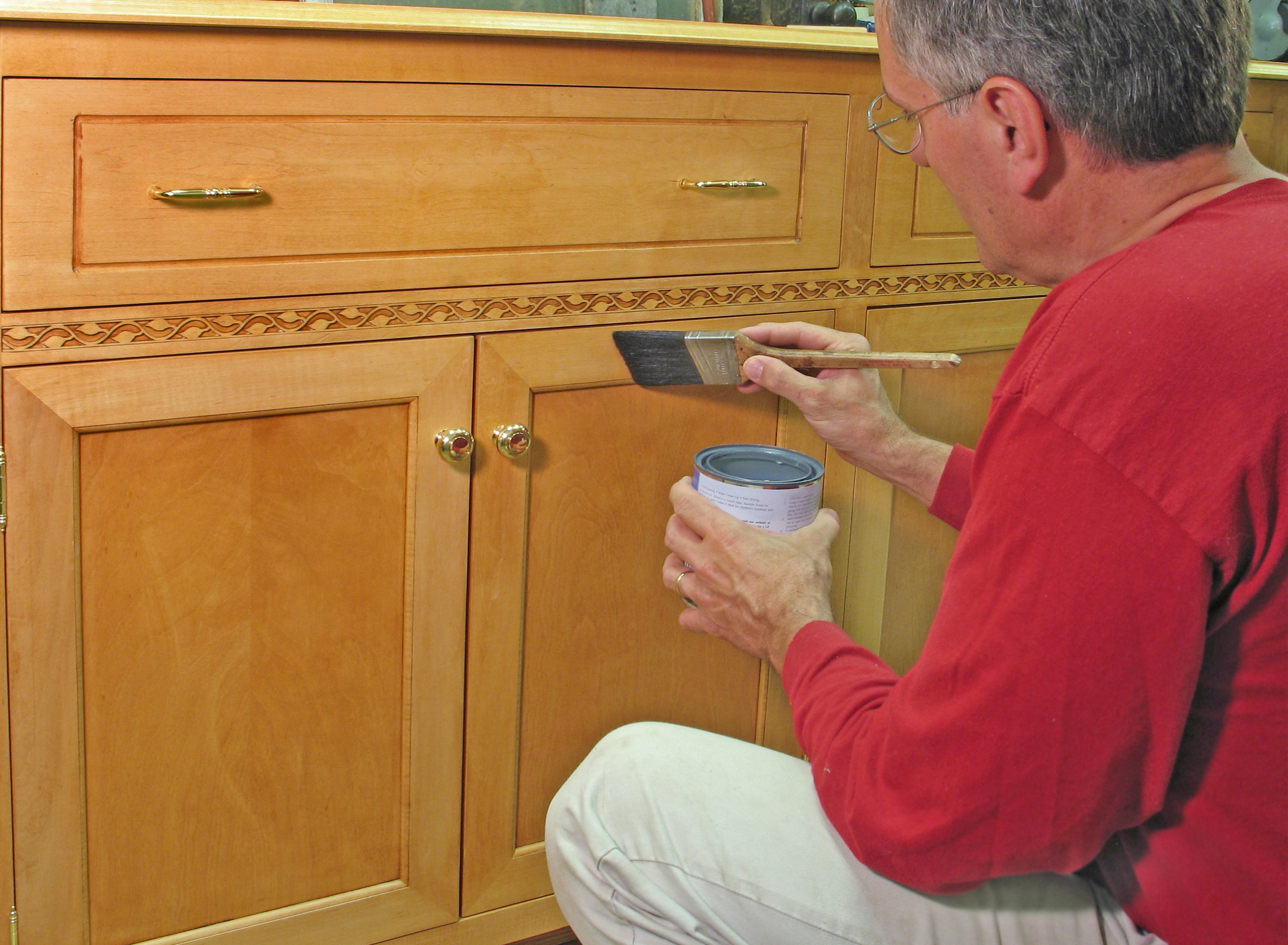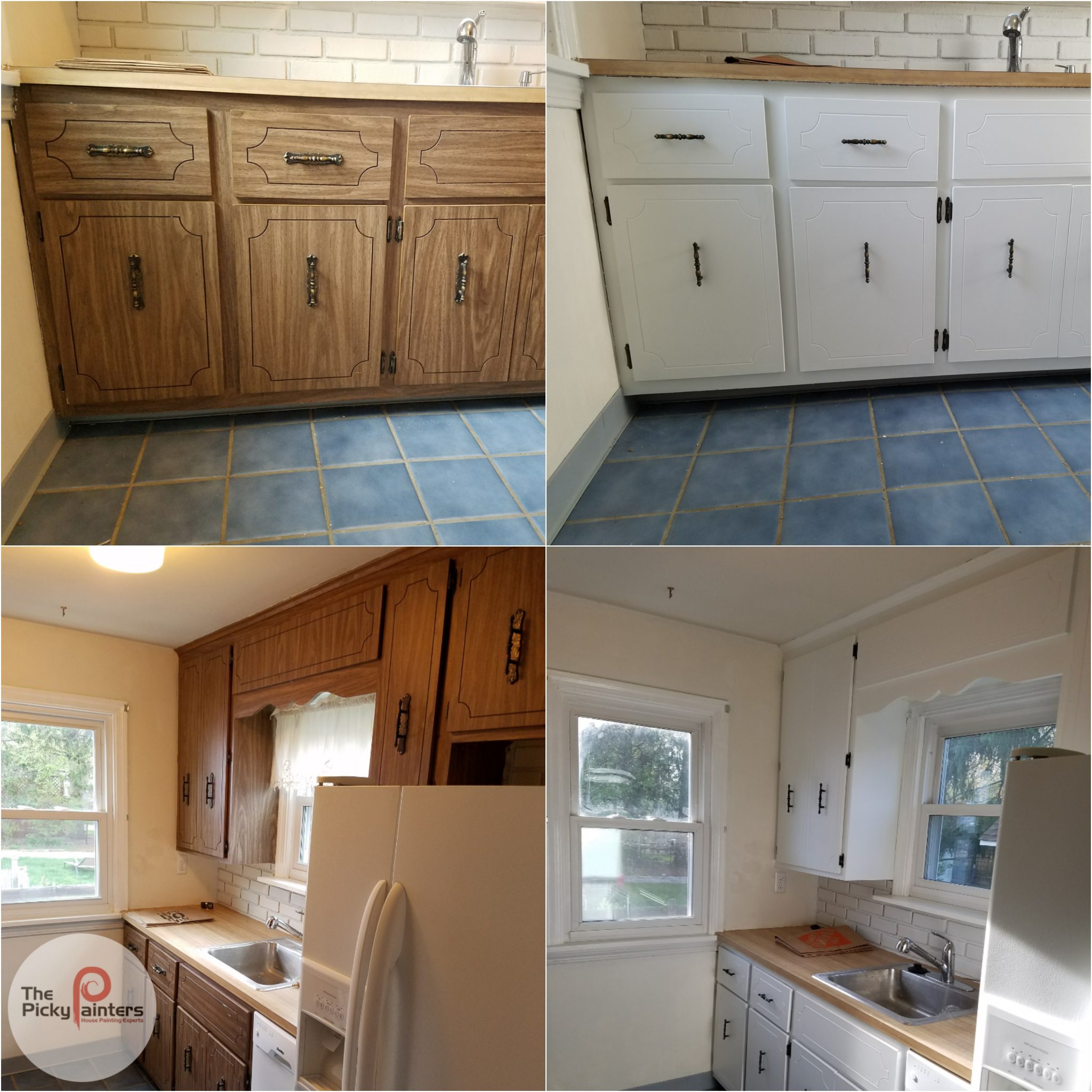Surface Preparation for Painting RTF Cabinets: Can Rtf Cabinets Be Painted

Right, so you’re prepping your RTF (Ready-to-Finish) cabinets for a paint job, eh? A bit of elbow grease now will save you a world of hurt later. Proper surface preparation is absolutely key for a finish that’ll last and look the biz. Think of it as laying the foundation for a top-notch paint job – cut corners here, and you’ll regret it.
Cleaning and Prepping RTF Cabinet Surfaces
Before you even think about touching a paintbrush, a thorough clean is essential. Dust, grease, and any old finish need to be banished. Use a degreaser – sugar soap is a good shout – and a soft cloth or sponge. Pay particular attention to those hard-to-reach nooks and crannies. Once sparkling clean, allow the cabinets to dry completely before moving on. This prevents any nasty surprises later down the line. Light sanding with fine-grit sandpaper (around 220-grit) will help create a better surface for the primer to adhere to. Don’t go overboard though; you’re not aiming for a completely smooth surface at this stage, just a bit of a key.
Primer Selection for RTF Cabinets
Choosing the right primer is crucial for optimal adhesion and a flawless finish. Different primers offer varying benefits depending on the surface and the type of paint you’re using. Here’s a comparison of suitable options:
| Primer Type | Description | Advantages | Disadvantages |
|---|---|---|---|
| Oil-based Primer | A traditional primer offering excellent adhesion and stain blocking. | Great for covering stains and imperfections, durable. | Strong odour, longer drying time, requires mineral spirits for cleanup. |
| Water-based Primer | A more modern option, low odour and easy cleanup. | Low odour, easy cleanup with water, faster drying time. | May require multiple coats for optimal coverage, less durable than oil-based. |
| Shellac-based Primer | A fast-drying primer ideal for use on various surfaces. | Fast drying, good adhesion, seals in tannins. | Can be more expensive, requires alcohol for cleanup. |
| Acrylic Primer | A versatile primer suitable for most surfaces. | Good adhesion, relatively low odour, easy cleanup. | May not be as effective as oil-based for stain blocking. |
Filling Imperfections and Sanding Smooth, Can rtf cabinets be painted
Now for the nitty-gritty. Filling any imperfections – chips, scratches, etc. – before painting is vital for a professional finish. Use a high-quality wood filler, applying it sparingly and letting it dry completely before sanding.
- Apply a thin layer of wood filler to any imperfections.
- Allow the filler to dry completely according to the manufacturer’s instructions.
- Once dry, sand the filled areas smooth using progressively finer grits of sandpaper (start with a coarser grit and finish with a fine grit like 220-grit).
- Wipe away sanding dust with a tack cloth.
- Inspect the surface carefully for any remaining imperfections and repeat the process as needed.
Masking Techniques for Clean Lines
Proper masking is your best mate for preventing paint splatters and achieving those crisp, clean lines. Use painter’s tape – FrogTape is a popular choice – along all edges of the cabinets and any areas you don’t want to be painted. Press the tape firmly to ensure a good seal. For particularly intricate areas, you might consider using masking paper in conjunction with the tape. Apply the masking paper first, then carefully tape over the edges to create a clean barrier. Remember, careful preparation here means you’ll spend less time cleaning up afterwards. This is especially important around hinges, handles, and other details. Take your time and be precise; rushing this step will show in the final finish.
Paint Selection and Application Techniques for RTF Cabinets

Right, so you’ve prepped your RTF cabinets – top marks for that! Now, let’s crack on with the painting itself. Choosing the right paint and applying it properly is absolutely crucial for a finish that’ll last. A dodgy job will scream “student project” louder than a three-day-old kebab.
Choosing the wrong paint is a right recipe for disaster, leading to peeling, chipping, and general aesthetic disappointment. Getting it right, however, will give you a result that’ll impress even your most critical housemate.
Paint Type Comparison
The selection of paint is paramount. Different paint types offer varying levels of durability, drying times, and ease of application. Here’s a rundown to help you choose wisely:
| Paint Type | Durability | Drying Time | Application Method |
|---|---|---|---|
| Acrylic Latex | Good; durable enough for most kitchen environments, especially with a quality primer. Resists yellowing better than oil-based paints. | Relatively quick; usually touch dry within an hour, recoatable in a few hours. | Brush, roller, or spray. Easy cleanup with water. |
| Oil-Based Alkyd | Excellent; highly durable and resistant to scratches and wear. Offers a harder, more resilient finish. | Significantly longer; can take several hours to dry to the touch and up to 24 hours before recoating. | Brush or roller. Requires solvents for cleanup (turpentine or mineral spirits). |
| Water-Based Alkyd | Very good; combines the durability of oil-based paints with the ease of cleanup of water-based paints. | Faster drying time than oil-based alkyds, but slower than latex. | Brush or roller. Easy cleanup with soap and water. |
Step-by-Step Painting Guide
Getting a smooth, even finish requires a bit of finesse. Follow these steps to avoid that dreaded “amateur hour” look:
Can rtf cabinets be painted – Proper preparation is key. Ensure your surfaces are clean, dry, and primed (as discussed in the previous section). A poorly prepped surface will show through even the most carefully applied paint.
- Apply a thin, even coat: Avoid overloading your brush or roller. Multiple thin coats are far better than one thick, gloopy one.
- Work in sections: Painting a whole cabinet in one go is a recipe for drips and uneven coverage. Work methodically, section by section.
- Maintain a wet edge: Keep the edges of your painted areas wet to avoid visible lap marks. Blend each stroke smoothly into the previous one.
- Use smooth, consistent strokes: Avoid harsh, erratic movements. A gentle, controlled approach will result in a far superior finish.
- Allow sufficient drying time between coats: This is crucial to prevent peeling or a blotchy finish. Refer to the paint manufacturer’s instructions for recoating times.
- Lightly sand between coats (optional): For an ultra-smooth finish, very lightly sand with fine-grit sandpaper between coats. Remove dust thoroughly before applying the next coat.
Ventilation and Drying Time
Proper ventilation is absolutely non-negotiable. Working in a well-ventilated area will reduce the risk of headaches and other health issues associated with paint fumes. Poor ventilation can also lead to longer drying times and a less durable finish. Open windows, use fans, and if necessary, consider using a respirator.
Insufficient drying time between coats can lead to several issues: the top coat may lift or peel, the paint may appear blotchy, and the overall durability will be significantly reduced. If you notice any issues, you may need to lightly sand the affected area, clean it thoroughly, and reapply the paint after ensuring proper drying time. Always check the manufacturer’s guidelines for recoating times. Don’t rush it; patience is key.
Addressing Common Challenges and Troubleshooting

Painting ready-to-assemble (RTF) cabinets can present unique challenges, even for experienced DIYers. Understanding these potential pitfalls and implementing preventative measures is key to achieving a professional, long-lasting finish. This section Artikels common problems, offers practical solutions, and provides guidance on achieving a flawless result.
Peeling Paint
Peeling paint is a common issue, often stemming from inadequate surface preparation. The existing melamine finish on RTF cabinets doesn’t readily accept paint without proper priming. Insufficient sanding, the use of low-quality primer, or applying paint too thickly can all contribute to adhesion problems. To prevent peeling, ensure thorough sanding to create a slightly rough surface for better paint grip. Apply a high-quality primer specifically designed for melamine or similar surfaces, allowing ample drying time between coats. Thin coats of paint are crucial; multiple thin coats are far superior to one thick coat. Consider using a bonding primer for added adhesion security.
Uneven Finish
An uneven finish is usually caused by inconsistent application or poor surface preparation. Uneven sanding, missed spots of primer, or variations in paint thickness will all lead to a patchy appearance. Proper sanding is paramount, employing fine-grit sandpaper to achieve a smooth, even surface before priming. Apply thin, even coats of both primer and paint, using smooth, consistent strokes. Allow sufficient drying time between coats to avoid creating a sticky surface. Lightly sanding between coats can improve adhesion and create a smoother finish.
Drips and Runs
Drips and runs are typically the result of applying paint too thickly or working in excessively humid conditions. Using a high-quality paint with good flow and levelling properties can mitigate this issue. Working in a well-ventilated area with controlled humidity is also important. Apply paint in thin, even coats, allowing each coat to dry thoroughly before applying the next. If drips or runs occur, allow the paint to dry completely, then lightly sand the affected area before applying a further coat.
Achieving a Professional Finish
A professional finish requires attention to detail, particularly in handling edges, corners, and hardware. For edges and corners, use a high-quality brush or a small foam roller to apply paint neatly and evenly. Multiple thin coats are essential to avoid build-up. Consider using painter’s tape for precise lines, especially on sharp edges. For hardware, remove it completely before painting to ensure a flawless finish on the cabinet surface. Reattach the hardware after the paint has fully cured.
Painting Cabinet Doors and Drawers Separately
Painting cabinet doors and drawers separately allows for efficient and controlled application. Remove all doors and drawers, laying them flat on a clean, protected surface. This prevents accidental damage and allows for easy access to all surfaces. Painting in stages ensures that each piece receives adequate attention and that the paint dries evenly. This approach also allows for easier handling of the components. Remember to use appropriate supports to prevent warping during the drying process.
